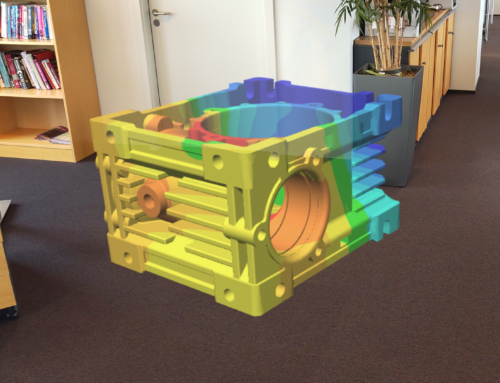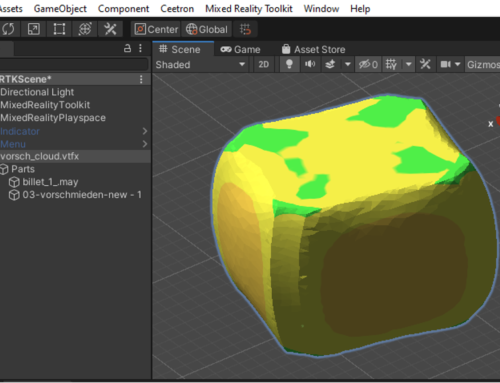(15.10.2020) Sophia Antipolis, France
Gastronomical considerations
Bringing together simulation and design software in unified environments has been an ongoing process for decades. On one hand, larger CAD-cored organizations have added simulation capabilities to their systems through acquisitions mostly over the 2005-2015 period. From the CAE perspective, the market has been consolidating swiftly and the remaining actors are adding more geometry design features to their offerings.
Clearly, both spaces are joining hands to upstream simulation results closer to the design stage, trying to cut the time to market new products. The sooner a designer can test the viability of his or her design with simulation, the sooner it can be modified without further time-consuming consequences. It is hard to say if the fields of simulation-driven design and generative design are a consequence or a cause of this upstreaming, nevertheless global engineering frameworks offering such capabilities are blooming within both CAE and CAD platforms.
From a developer’s perspective, building software that integrates design and simulation reveals new challenges and inspires new needs. And this is a concern for us here at Ceetron, as CAE SDK provider.
My thesis statement for this blog was that bringing engineering SDKs together rather than have them working side-by-side delivers the required extra power.
I was however having trouble with the catch phrase when a waiter unexpectedly helped me out. He inquired: “Fromage ou dessert?”, a very traditional question here in France at the end of a meal. Would I rather have savory cheese or a sweet dessert instead?
I chose to be disruptive and asked for both.
When facing the task of integrating data structures and visualizations of both design geometry and numerical simulation results, would an engineering application developer rather have two specialized development kits or a broader toolset addressing the full scope?
Isolated SDKs can do the job on their own to some extent, just like “cheese or dessert”, but true comfort is only achieved by “cheese AND dessert”.
About Tech Soft 3D and Ceetron AS
A good starting point to create such a versatile development platform is to harbor the best tools on the market in the same organization. This is what Tech Soft 3D just achieved by acquiring Ceetron AS. Curiously, both companies were founded in 1996 and have since led similar paths, each within its specific field.
The HOOPS platform of SDKs by Tech Soft 3D is a market leader for the development of a wide range of engineering applications. Combining state-of-the-art graphics technology, robust and efficient data translation of industry-standard CAD formats and an extensive 3D data publishing toolkit, HOOPS is the backbone of hundreds of desktop and web applications.
Ceetron Components, also available for desktop and web development, are the reference SDKs for CAE data processing and visualization. They are complemented by an import SDK that reads most industry-standard CAE files and a wide range of possibilities for publishing and sharing – even remotely – 3D interactive analysis models. These components take on the visualization of several market-leading simulation packages and are successfully used in in-house custom development projects in large industrial organizations.
No doubt about it: similar paths in similar markets over 25 years have led to SDKs that have a lot in common despite the differences of their preferred fields of application.
Mixing design and CAE data
The fact is that even if design and simulation share a common goal – the final product – engineers in both spaces have very different needs when it comes to data processing, visualizing and sharing.
Computer-aided design is the computerized version of the good old drawing board. Accurate geometrical representation is core for the design of sophisticated systems, often comprising large numbers of components. There is little room for simplifications or approximations: shapes need to be complex and from there, the tools to build them are as well. The feature set of a design software must not only cover efficient geometry generation – the drawing itself – but also needs to address engineering constraints and standards to ensure that the design is compliant and can in principle be manufactured. Finally, you need an efficient and high-quality rendering to easily evaluate the looks of your design.
The handover of this data to the simulation space can quickly turn into a nightmare. In contradiction with the needs of the design phase, geometrical complexity is something CAE fights against. Complicated shapes with a high level of detail mean high (or inaccessible) computation times. Furthermore, data structures are simply not the same: CAD uses high-order surface definitions (mostly NURBS) whereas CAE relies on meshes of duly connected elements and nodes. The task at hand when moving from CAD to CAE is to convert the complex NURBS into a mesh, while only keeping the features relevant to the simulation to moderate computation times.
Furthermore, CAE’s purpose in life is to produce results. Gigabytes and gigabytes of results are the usual output of a typical simulation nowadays. CAE visualization needs to cope with large datasets and will have to get used to even larger ones with the generalization of optimization and machine learning technology. Engineers are not only interested in one or two simulations at a time. They now seek to perfect their analysis through techniques that browse through hundreds or thousands of them.
Efficient access to large datasets is key to any CAE software development kit. Optimized feature extraction is another category of algorithms that makes the difference: cutting planes, isosurfaces and isovolumes or particle traces are basic tools where performance is a must.
Bottom line: be disruptive, order both
Design is about sophisticated systems of complex geometries. CAE deals with simplified shapes and focuses on simulation result analysis. The two spaces need to interoperate through efficient data flows and structures. They also need to cooperate when there is a need to include simulation results and geometry in the same visualization.
The challenges to mix both worlds lay ahead. The reward as well: the next generation of engineering applications will fit design and simulation engineers alike.
As of now, the two best SDKs for such a task are playing ball together. Stay tuned, these are exciting times for our community.
Andres, CMSO











Leave A Comment
You must be logged in to post a comment.